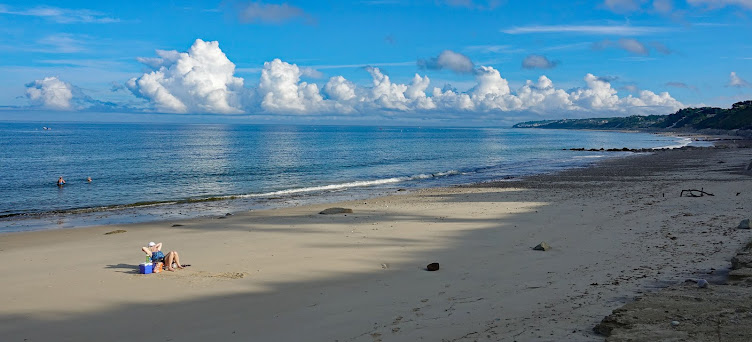
Dating back from the time of Julius Caesar, the town of Carmona perches on a promontory less than an hour east of Seville in the Andalusian region of southern Spain. We visited a few weeks ago as a storm passed through town and here's the link to that earlier blog post.
Carmona feels like one of those timeless places where the crenelations of centuries-old battle walls still stand and people still walk daily through the main arch without a second thought.

Although the whitewashed walls are most typical in modern construction, (whose purpose is to keep places cool in the blistering heat of summer), it is not uncommon to round a corner and see a peek-a-boo view of the former castle battlements towering overhead, instantly a reminder of a past long gone.

The Moorish influenced design arch is also an ever-present reminder of the town's long history. It is a town where people live their lives as they have for centuries. Where sitting at a warm table on the sunny town square sharing a moment of food and drink and friendship is common and expected - where "hurry" is not a welcome trait.

Where at midday, a number of elder gents congregate to lament their ailments, sadly share news of someone's passing, or argue over the latest futbol match. Rituals performed in this town for centuries, unchanged but for the names and faces.

An occasional palm frond still graces a window, a remnant of the recent Semana Santa celebration over the Christian Holy Week.

Where the whiteness of the town walls can best be seen with just a splash of color by the ever-accommodating Amy the model. (One of the advantages of both spouses being photographers is that each has to sometimes model-on-demand without too much complaining.).

A red hat and/or umbrella should always be in the suitcase of a traveling photographer.

Dating back to the 9th Century BC, the Carthaginians first designed this archway. Subsequent Roman improvements were made through the 12th century. Even thousands of years ago, builders had discovered the secret to a keystone shaped arch to support a broad opening through which troops and goods could pass efficiently and be easily defended against marauders.

At midday, the central mercado is quiet, most locals having gone home for lunch and siesta. Only a few shopkeepers (with children in tow) are still out and about.

Whether this boy grows up to be a shopkeeper himself or, a renowned flamenco guitarist, only time will tell but, he handled the instrument with a reverence that suggests music courses deeply through his veins.

An occasional palm frond still graces a window, a remnant of the recent Semana Santa celebration over the Christian Holy Week.

Where the whiteness of the town walls can best be seen with just a splash of color by the ever-accommodating Amy the model. (One of the advantages of both spouses being photographers is that each has to sometimes model-on-demand without too much complaining.).

A red hat and/or umbrella should always be in the suitcase of a traveling photographer.

Dating back to the 9th Century BC, the Carthaginians first designed this archway. Subsequent Roman improvements were made through the 12th century. Even thousands of years ago, builders had discovered the secret to a keystone shaped arch to support a broad opening through which troops and goods could pass efficiently and be easily defended against marauders.

At midday, the central mercado is quiet, most locals having gone home for lunch and siesta. Only a few shopkeepers (with children in tow) are still out and about.

Whether this boy grows up to be a shopkeeper himself or, a renowned flamenco guitarist, only time will tell but, he handled the instrument with a reverence that suggests music courses deeply through his veins.

No comments:
Post a Comment